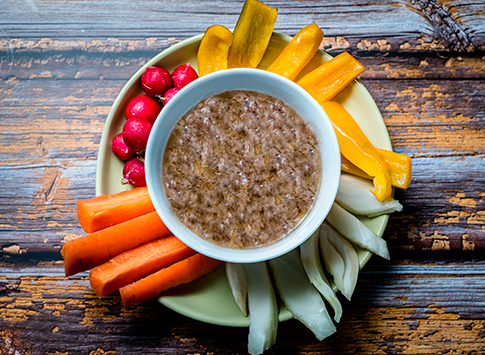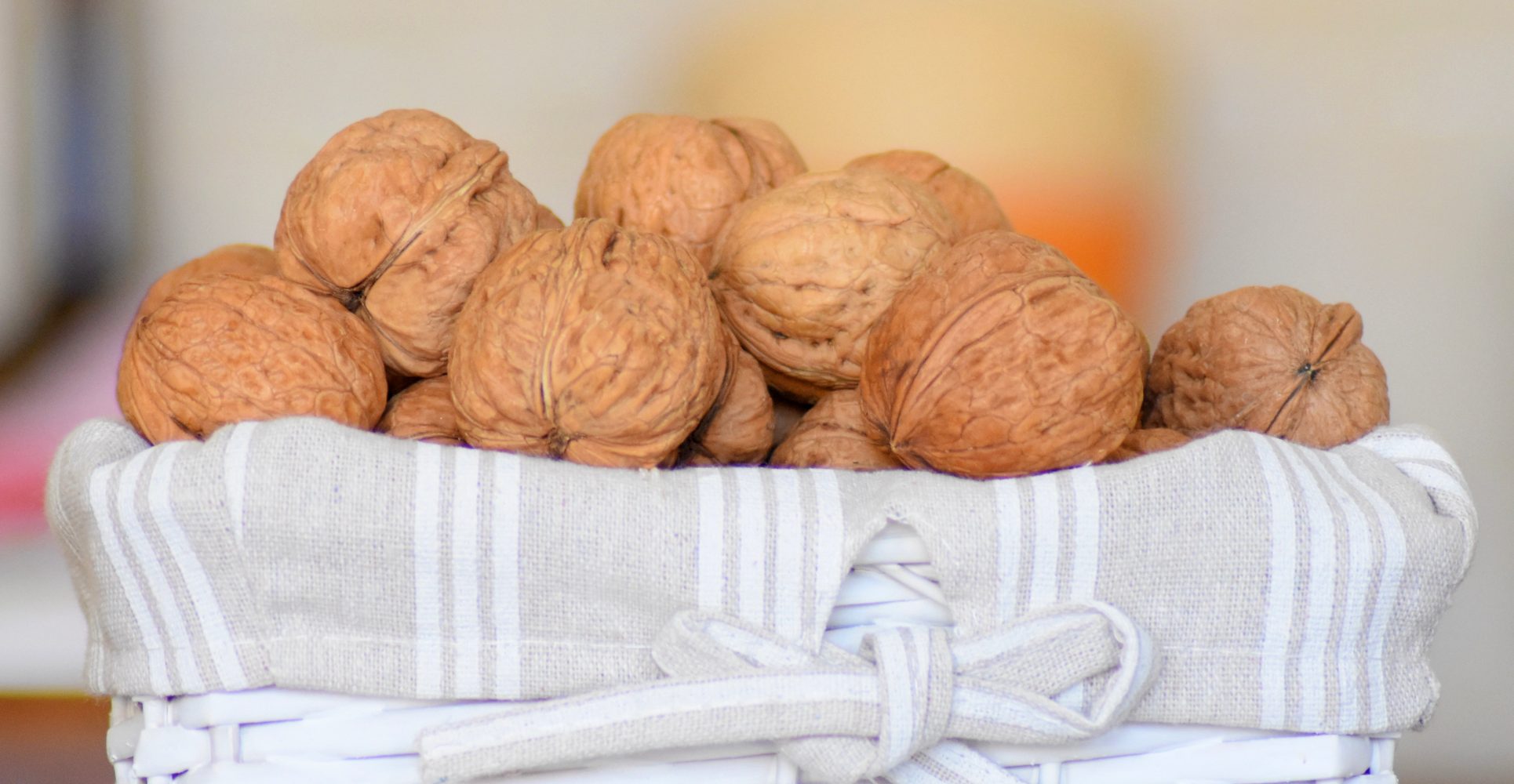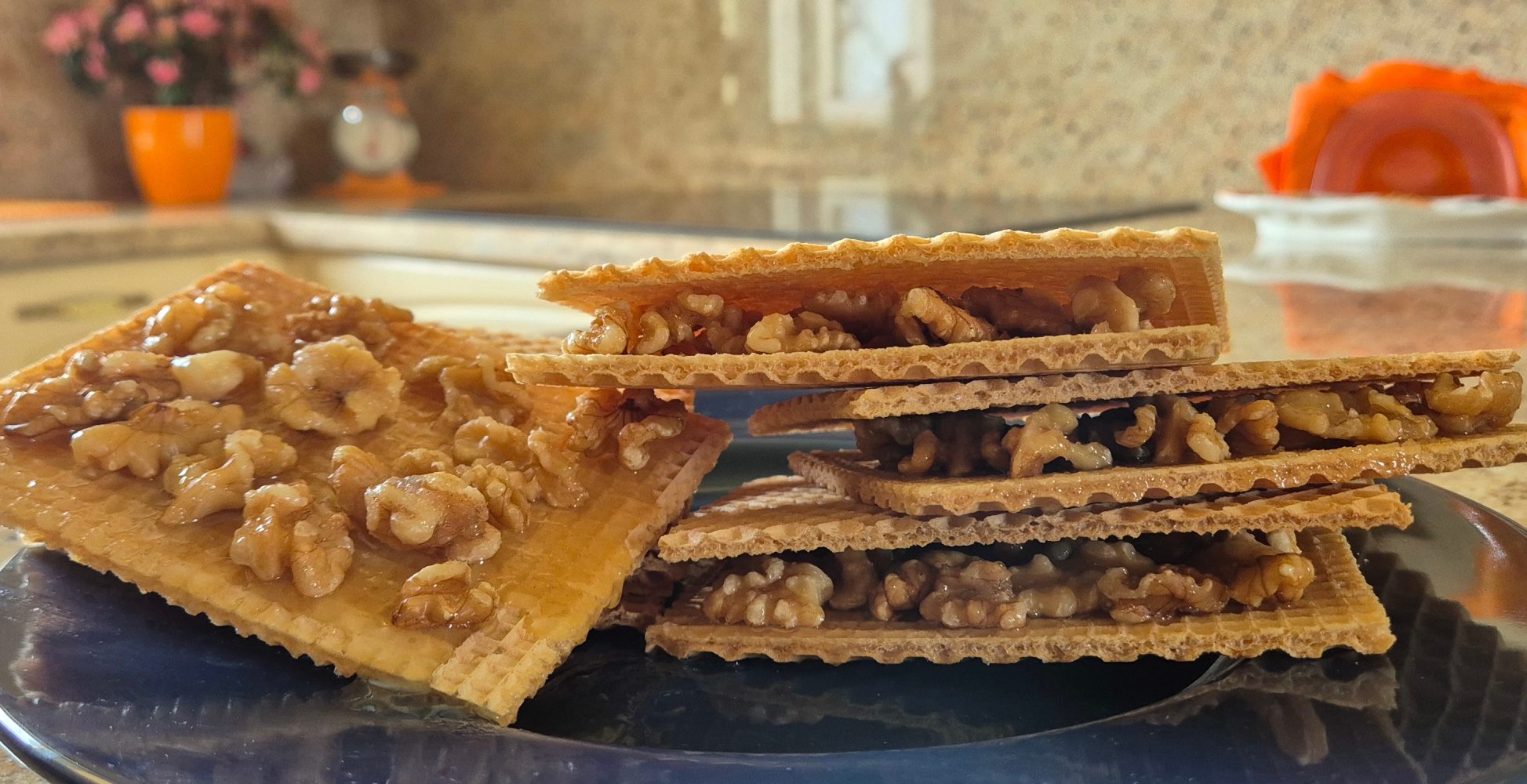Descrizione
VALORI NUTRIZIONALI MEDI PER 100g DI PRODOTTO
| Energia | 1.679 kJ / 406 kcal | |
| Grassi | 35 g | |
| acidi grassi saturi | 4,3 g | |
| Carboidrati | 9,3 g | |
| zuccheri | 0 g | |
| Fibre | 5,7 g | |
| Proteine | 9,7 g | |
| Sale | 4,7 g |


La bagna càuda o bagna caoda (dal dialetto piemontese bagna = salsa e cauda = calda) è una tipica specialità gastronomica del basso Piemonte a base di olio, aglio e acciughe, che viene consumata soprattutto nel periodo autunno-invernale, intingendovi le verdure di stagione, le quali possono essere crude o cotte.
In passato veniva consumata come piatto unico, ma ora è più facile vederla sotto forma di appetizer, servita come antipasto in una cena tra amici.
La nostra bagna cauda, preparata con l’olio delle nostre noci Lara, conserva il sapore della tradizione piemontese ed è un invito alla convivialità tipica di un tempo.
Olio di noci estratto meccanicamente da noci della varietà Lara (origine: Italia) 41%, aglio (origine: Italia), acciughe, latte, vino (contiene solfiti), sale. Senza conservanti aggiunti.
Disponibile in vasetti da 200 g.
| Energia | 1.679 kJ / 406 kcal | |
| Grassi | 35 g | |
| acidi grassi saturi | 4,3 g | |
| Carboidrati | 9,3 g | |
| zuccheri | 0 g | |
| Fibre | 5,7 g | |
| Proteine | 9,7 g | |
| Sale | 4,7 g |

 PER INFORMAZIONI
PER INFORMAZIONI CONSEGNA GRATUITA
CONSEGNA GRATUITA INFO SULL'ACQUISTO
INFO SULL'ACQUISTO
Difficoltà: facile
Preparazione: 15 minuti
Cottura: 8 minuti
Dosi per: 4 persone
Una ricetta facile e veloce che vi permetterà di creare sfiziosi involtini di pollo con un cuore goloso di noci, pere e cremoso gorgonzola.
»
Diversi alimenti, tra cui le noci, contengono acido ellagico, una molecola capace di inibire la proliferazione dei microrganismi tra cui quelli patogeni, contrastando, quindi, le infezioni batteriche.
»
E’ un dolce di origine medievale, costituito da due ostie che racchiudono un ripieno croccante. Nella nostra zona, questa farcitura è costituita da noci e miele.
»